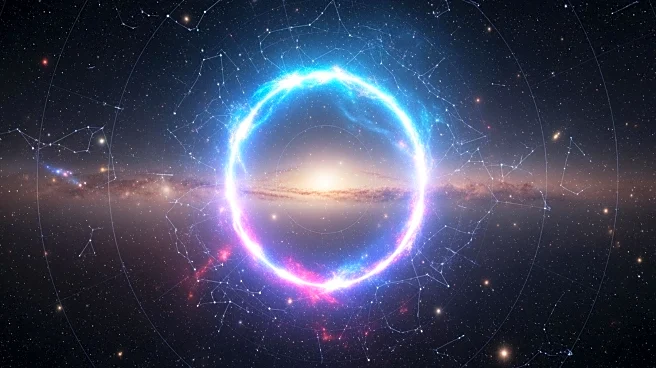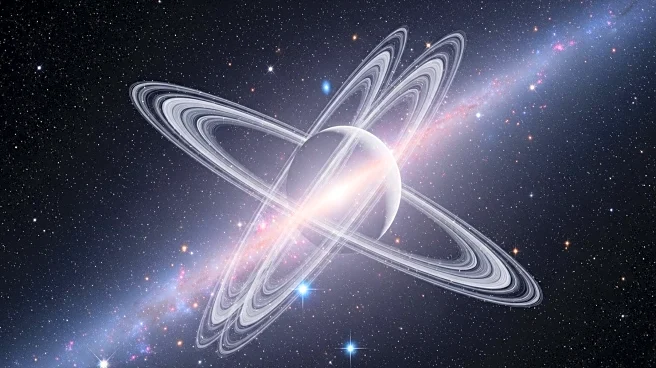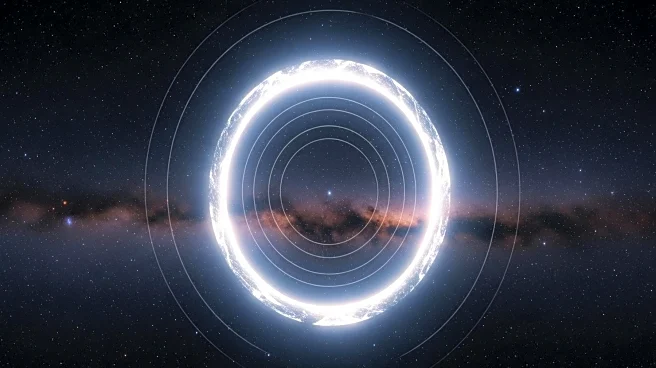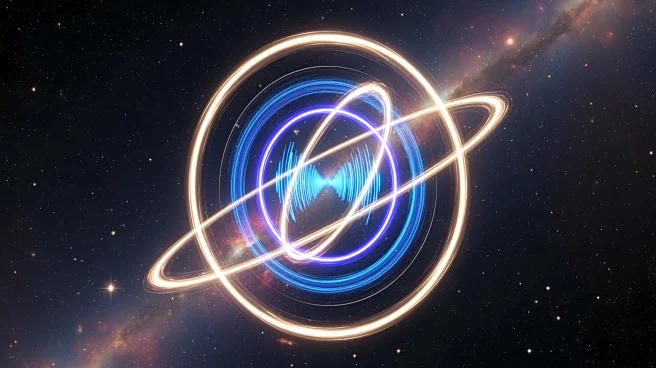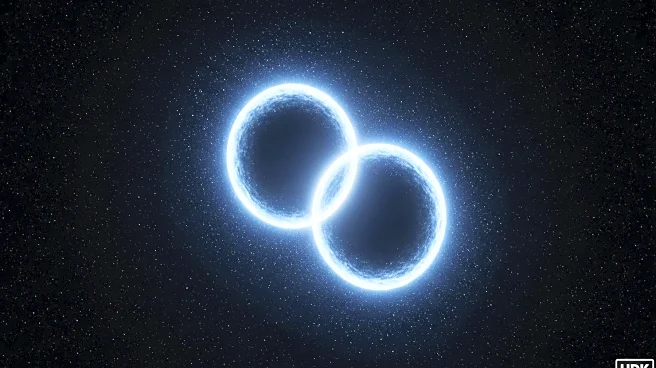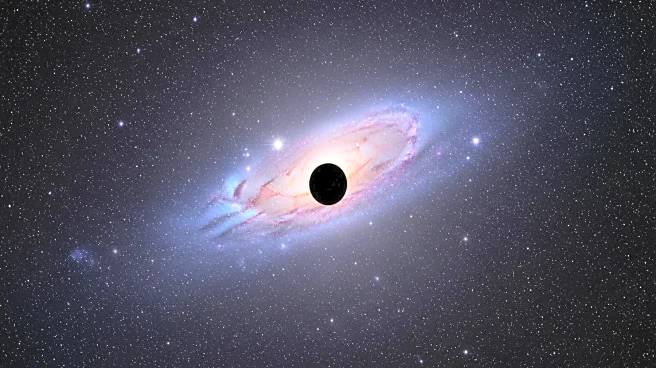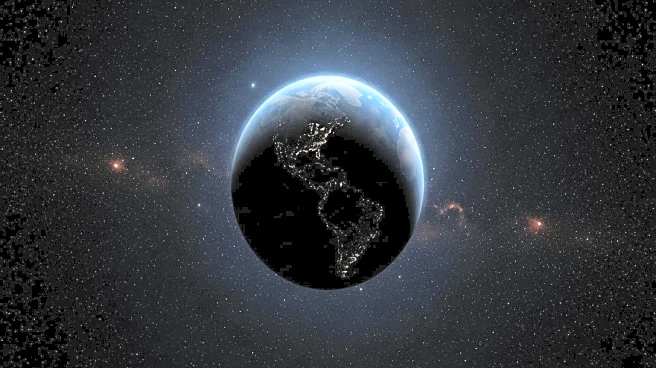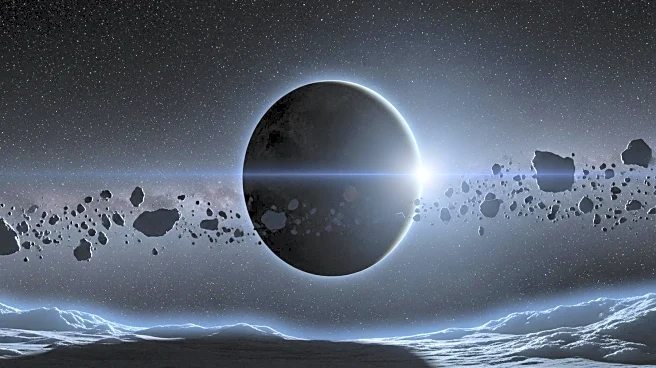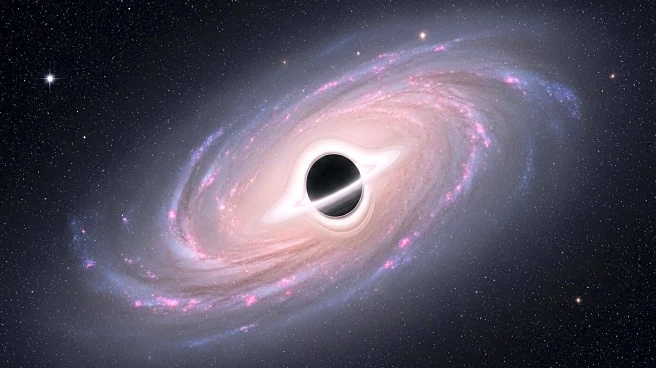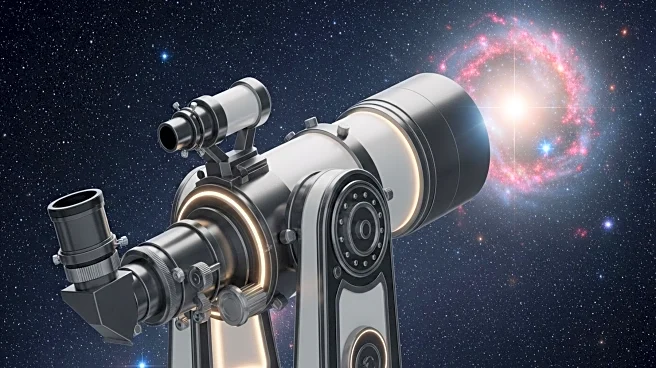What's Happening?
Astronomers, aided by citizen scientists, have identified the most powerful 'odd radio circle' (ORC) to date. These ORCs are large, faint rings of plasma that emit radio waves and encircle certain galaxies.
The newly discovered ORC is unique due to its configuration of two interlocked rings, a phenomenon observed only once before. This ORC, named RAD J131346.9+500320, is the most distant and powerful found so far. The discovery was made through the RAD@home Astronomy Collaboratory, an international citizen science platform, and confirmed by astronomers using the Low-Frequency Array (LOFAR) radio telescopes. The findings were published in the Monthly Notices of the Royal Astronomical Society.
Why It's Important?
The discovery of this ORC is significant as it may provide insights into the formation of galaxies and the role of supermassive black holes. ORCs are thought to form from cosmic shock waves when black holes collide, but the structure of RAD J131346.9+500320 suggests it may have been shaped by 'super winds' from spiral galaxies. Understanding these structures could advance knowledge of cosmic evolution and the interaction between galaxies and black holes. The involvement of citizen scientists underscores the importance of human pattern recognition in astronomical research, even as machine learning becomes more prevalent.
What's Next?
Further research using LOFAR and other telescopes, such as the Vera C. Rubin Observatory, is expected to continue exploring these cosmic structures. The study of ORCs may lead to new theories about galaxy formation and the dynamics of the universe. As more ORCs are discovered, scientists hope to refine their understanding of these phenomena and their implications for cosmology.
Beyond the Headlines
The discovery highlights the collaborative nature of modern astronomy, where citizen scientists play a crucial role alongside professional researchers. This partnership not only accelerates scientific discovery but also democratizes the process, allowing broader participation in scientific inquiry.
